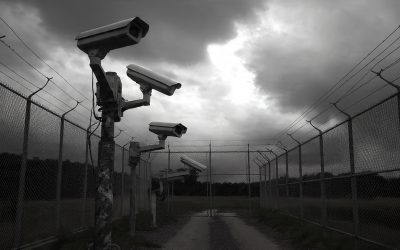Protecting Your CCTV Footage: Best Practices for Data Storage and Integrity.
In an era where security is paramount, the protection of CCTV footage has become increasingly critical. CCTV systems serve as the eyes and ears of both residential and commercial properties, capturing vital evidence that can deter crime and assist in investigations. The footage recorded can provide crucial insights into incidents, helping law enforcement agencies piece together events and identify suspects.
However, the value of this footage is only realized when it is adequately protected from unauthorized access, tampering, or loss. The implications of failing to secure this data can be severe, ranging from compromised investigations to significant financial losses for businesses. Moreover, the importance of protecting CCTV footage extends beyond immediate security concerns.
In many jurisdictions, there are legal obligations regarding the handling and storage of surveillance data. Failure to comply with these regulations can lead to hefty fines and legal repercussions. Therefore, ensuring that CCTV footage is safeguarded not only protects the integrity of the data but also helps organizations adhere to legal standards.
This dual necessity underscores the importance of implementing robust security measures for CCTV footage. Peace of mind is our priority.
Best Practices for CCTV Data Storage
When it comes to storing CCTV footage, adopting best practices is essential for ensuring data security and accessibility. One of the foremost practices is to establish a clear retention policy that outlines how long footage will be stored before being deleted. This policy should take into account legal requirements, as well as the specific needs of the organization.
For instance, businesses may need to retain footage for longer periods due to potential liability issues, while residential users may have different requirements. By defining a retention schedule, organizations can manage storage resources effectively while ensuring compliance with regulations. Another best practice involves utilizing high-quality storage solutions that are designed specifically for video data.
Traditional hard drives may not be suitable for the continuous writing and reading demands of CCTV footage. Instead, organizations should consider using Network Video Recorders (NVRs) or Digital Video Recorders (DVRs) that are optimized for video storage. These devices often come with features such as redundancy and failover capabilities, which enhance data protection.
Additionally, implementing a tiered storage approach can be beneficial; frequently accessed footage can be stored on faster drives, while older data can be archived on slower, more cost-effective storage solutions.
Choosing the Right Storage Solution for CCTV Footage
Selecting the appropriate storage solution for CCTV footage is a critical decision that can impact both security and accessibility. Organizations must evaluate their specific needs, including the volume of footage generated, the required retention period, and budget constraints. Cloud storage has gained popularity due to its scalability and remote access capabilities.
It allows users to store large amounts of data without the need for extensive on-site infrastructure. However, organizations must also consider potential vulnerabilities associated with cloud services, such as data breaches or service outages. On-premises storage solutions offer another viable option, providing organizations with complete control over their data.
This approach can be particularly advantageous for businesses that handle sensitive information or operate in regulated industries. When choosing an on-premises solution, factors such as storage capacity, speed, and redundancy features should be carefully assessed. Ultimately, the right storage solution will depend on a combination of organizational needs, risk tolerance, and budgetary considerations.
Implementing Redundancy in CCTV Data Storage
Redundancy is a fundamental principle in data storage that enhances reliability and minimizes the risk of data loss. For CCTV footage, implementing redundancy means creating multiple copies of the data across different locations or devices. This practice ensures that even if one storage medium fails or becomes compromised, there are alternative copies available for retrieval.
Organizations can achieve redundancy through various methods, such as RAID (Redundant Array of Independent Disks) configurations or by utilizing cloud backup services alongside local storage. In addition to technical redundancy, organizations should also consider geographical redundancy. This involves storing copies of CCTV footage in different physical locations to protect against disasters such as fires or floods that could affect an entire site.
By diversifying storage locations, organizations can significantly reduce the risk of total data loss. Implementing redundancy not only safeguards valuable footage but also instills confidence in stakeholders regarding the organization’s commitment to data protection.
Ensuring Data Integrity in CCTV Footage
Securing access to CCTV data is a critical component of protecting sensitive information from unauthorized users. Organizations should implement strict access controls that limit who can view or manage CCTV footage based on their roles and responsibilities. This can be achieved through user authentication methods such as passwords, biometric scans, or two-factor authentication systems.
By ensuring that only authorized personnel have access to the footage, organizations can significantly reduce the risk of tampering or misuse. Furthermore, it is essential to maintain an audit trail of all access attempts to CCTV data. Logging user activity provides valuable insights into who accessed the footage and when, allowing organizations to identify any suspicious behavior or potential breaches quickly.
Regularly reviewing these logs can help organizations stay vigilant against internal threats and ensure compliance with data protection regulations.
Data integrity refers to the accuracy and consistency of data over its lifecycle. For CCTV footage, maintaining data integrity is crucial to ensure that the recorded information remains unaltered and reliable for future use. One effective way to ensure data integrity is through the use of checksums or hash functions that create a unique digital fingerprint for each video file.
By regularly verifying these checksums against the stored files, organizations can detect any unauthorized changes or corruption in the footage. Additionally, employing write-once-read-many (WORM) technology can further enhance data integrity by preventing any modifications to the stored footage after it has been recorded. This technology is particularly useful in environments where legal compliance is essential, as it provides an immutable record of events captured by CCTV systems.
By prioritizing data integrity measures, organizations can bolster their security posture and ensure that their CCTV footage remains a reliable source of evidence.
Securing Access to CCTV
As surveillance technology continues to evolve, so too do the regulations governing its use and data protection. Organizations must remain vigilant in understanding and complying with relevant laws regarding CCTV footage storage and handling. In many jurisdictions, there are specific guidelines outlining how long surveillance data can be retained, how it should be secured, and under what circumstances it can be shared with third parties.
Failure to comply with these regulations can result in severe penalties and damage to an organization’s reputation. Therefore, it is crucial for businesses to stay informed about changes in legislation and ensure that their policies align with legal requirements. Regular training sessions for employees on compliance matters can also foster a culture of accountability and awareness regarding the importance of protecting CCTV footage.
Regular Backups for CCTV Data
Regular backups are an essential practice for safeguarding CCTV footage against data loss due to hardware failures or cyberattacks. Organizations should establish a routine backup schedule that ensures all recorded footage is copied to a secure location at regular intervals. This practice not only protects against accidental deletions but also provides a safety net in case of catastrophic events such as ransomware attacks.
When implementing a backup strategy, organizations should consider both local and off-site backups to enhance redundancy further. Local backups allow for quick recovery in case of minor issues, while off-site backups protect against larger-scale disasters that could affect on-site systems. By maintaining a comprehensive backup strategy, organizations can ensure that their valuable CCTV footage remains accessible even in challenging circumstances.
Monitoring and Auditing CCTV Data Access
Monitoring and auditing access to CCTV data is vital for maintaining security and accountability within an organization. Regular audits help identify any unauthorized access attempts or unusual patterns in user behavior that may indicate potential security breaches. By establishing a routine audit process, organizations can proactively address vulnerabilities and reinforce their security measures.
In addition to audits, real-time monitoring tools can provide immediate alerts when unauthorized access occurs or when specific thresholds are met regarding data access frequency. These tools enable organizations to respond swiftly to potential threats and mitigate risks before they escalate into more significant issues. By prioritizing monitoring and auditing practices, organizations can create a robust security framework around their CCTV data.
Encryption and Data Security for CCTV Footage
Encryption plays a crucial role in securing CCTV footage from unauthorized access and ensuring that sensitive information remains confidential. By encrypting video files both at rest and in transit, organizations can protect their data from interception or tampering by malicious actors. Encryption algorithms convert footage into unreadable formats that can only be accessed by authorized users with the appropriate decryption keys.
In addition to encryption, organizations should also implement comprehensive cybersecurity measures such as firewalls, intrusion detection systems, and antivirus software to protect their networks from external threats. A multi-layered approach to security ensures that even if one layer is breached, additional defenses remain in place to safeguard sensitive CCTV data.
Disaster Recovery Planning for CCTV Data

Disaster recovery planning is an essential aspect of ensuring business continuity in the event of unforeseen incidents that could compromise CCTV data integrity or availability. Organizations should develop a comprehensive disaster recovery plan that outlines procedures for restoring access to CCTV footage following various scenarios such as natural disasters, cyberattacks, or hardware failures. This plan should include detailed steps for recovering lost data from backups, restoring systems to operational status, and communicating with stakeholders about any potential impacts on security operations.
Regularly testing the disaster recovery plan through simulations helps identify weaknesses and ensures that all personnel are familiar with their roles during an emergency situation. By prioritizing disaster recovery planning for CCTV data, organizations can minimize downtime and maintain security even in challenging circumstances. In conclusion, protecting CCTV footage is a multifaceted endeavor that requires careful consideration of various factors including storage solutions, access controls, compliance with regulations, and disaster recovery planning.
By implementing best practices across these areas, organizations can safeguard their valuable surveillance data while ensuring its integrity and accessibility when needed most.
In addition to the best practices outlined in “Protecting Your CCTV Footage: Best Practices for Data Storage and Integrity,” business owners may find it beneficial to explore the article on Choosing the Right Commercial Security System: A Guide for Business Owners. This resource provides valuable insights into selecting a comprehensive security system that not only includes CCTV but also integrates various security measures to enhance overall safety and data protection.
FAQs
What is the importance of protecting CCTV footage?
Protecting CCTV footage is crucial to ensure the integrity and confidentiality of the recorded data. Proper protection helps prevent unauthorized access, tampering, or loss of footage, which is essential for security, legal evidence, and operational purposes.
What are the best practices for storing CCTV footage?
Best practices for storing CCTV footage include using secure and reliable storage devices, implementing regular backups, encrypting the data, and storing footage in multiple locations to prevent data loss due to hardware failure or theft.
How can I ensure the integrity of my CCTV footage?
To ensure footage integrity, use tamper-proof storage solutions, apply digital signatures or hash functions to verify data authenticity, restrict access to authorized personnel only, and maintain detailed logs of access and modifications.
What types of storage devices are recommended for CCTV footage?
Recommended storage devices include Network Attached Storage (NAS), Digital Video Recorders (DVRs) with secure features, Solid State Drives (SSDs) for faster access, and cloud storage services that offer encryption and redundancy.
Is cloud storage a safe option for CCTV footage?
Yes, cloud storage can be safe if it uses strong encryption, secure access controls, and reliable backup systems. It also offers advantages like remote access and protection against physical damage to local storage devices.
How often should CCTV footage be backed up?
CCTV footage should be backed up regularly, depending on the volume of data and retention policies. Daily or weekly backups are common practices to minimize data loss and ensure availability.
What security measures should be implemented to protect stored CCTV footage?
Security measures include using strong passwords, enabling multi-factor authentication, encrypting stored data, restricting physical and network access, and regularly updating firmware and software to patch vulnerabilities.
Can CCTV footage be encrypted, and why is it important?
Yes, CCTV footage can and should be encrypted to protect it from unauthorized access and tampering. Encryption ensures that even if data is intercepted or stolen, it remains unreadable without the proper decryption key.
How long should CCTV footage be retained?
Retention periods vary based on legal requirements, organizational policies, and the purpose of the footage. Common retention times range from 30 days to several months, but critical footage may be stored longer for investigations or compliance.
What should I do if I suspect my CCTV footage has been tampered with?
If tampering is suspected, immediately secure the footage, document the issue, restrict access, and conduct a forensic analysis to determine the extent of tampering. It may also be necessary to notify relevant authorities depending on the situation.











